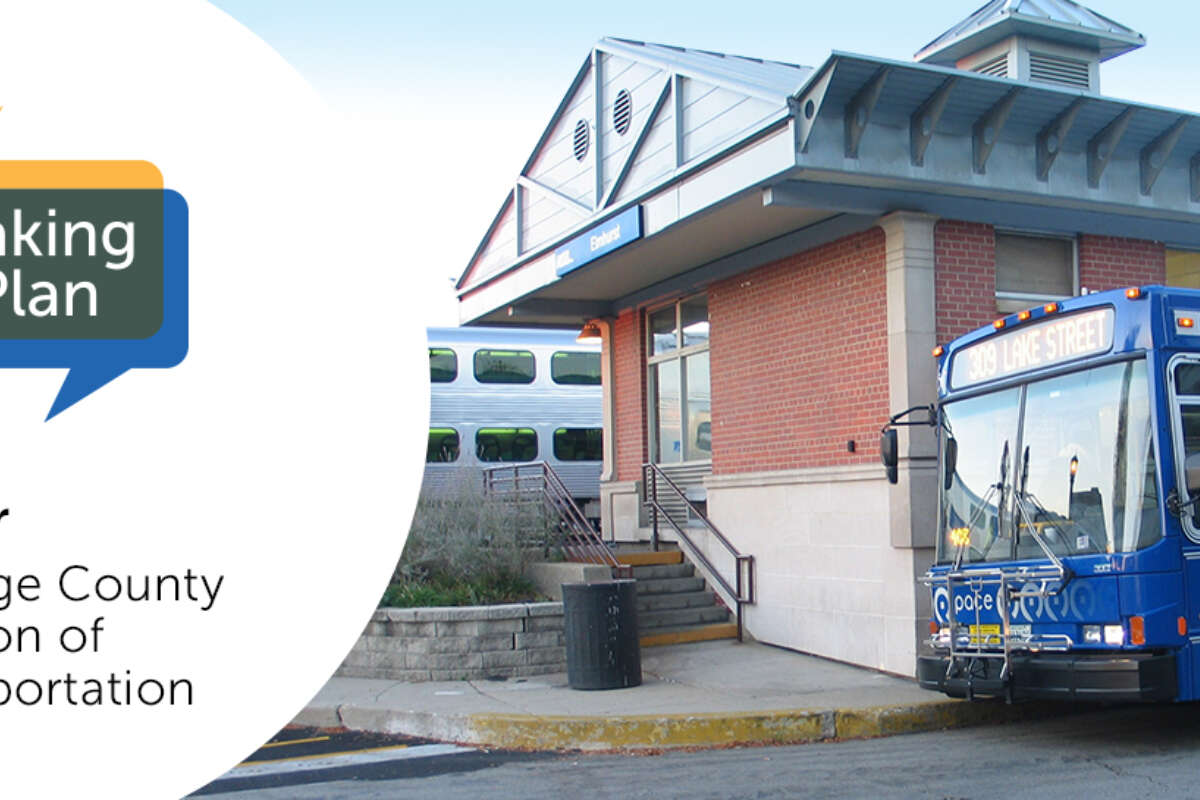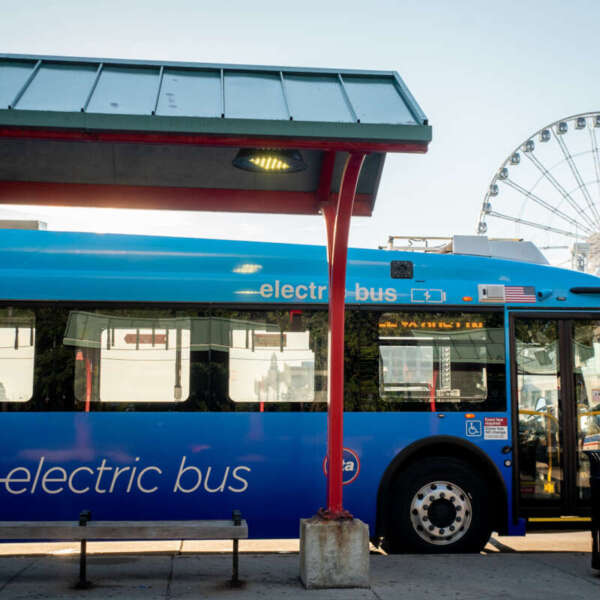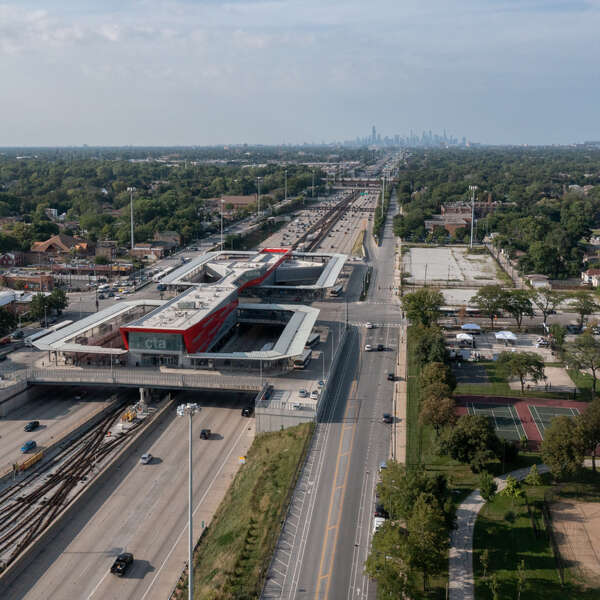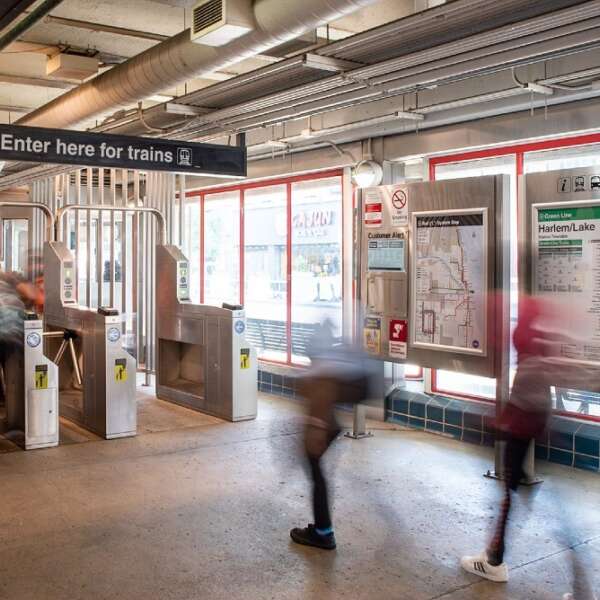Guest blogger from DuPage County discusses need for regional mobility improvements
October 26, 2021
October 26, 2021

 The RTA is currently developing the 2023 Regional Transit Strategic Plan for Northeastern Illinois at a time when the challenges and opportunities facing our region’s transit system have never been greater. Making a Plan represents our effort to engage and collaborate with close stakeholders and the public. We have invited a group of transit users and thinkers to answer a set of questions for an occasional guest series on Connections, the RTA blog. The views represented in this series are not those of the RTA, but they are views we want to hear and have heard. If you have thoughts about this post, the strategic plan, or would like to participate by contributing a guest blog post, please email communications@rtchicago.org and subscribe to our newsletter to learn more.
The RTA is currently developing the 2023 Regional Transit Strategic Plan for Northeastern Illinois at a time when the challenges and opportunities facing our region’s transit system have never been greater. Making a Plan represents our effort to engage and collaborate with close stakeholders and the public. We have invited a group of transit users and thinkers to answer a set of questions for an occasional guest series on Connections, the RTA blog. The views represented in this series are not those of the RTA, but they are views we want to hear and have heard. If you have thoughts about this post, the strategic plan, or would like to participate by contributing a guest blog post, please email communications@rtchicago.org and subscribe to our newsletter to learn more.
Name: John Loper
Organization or Affiliation: DuPage County Division of Transportation
Role/Responsibilities: Chief Transportation Planner
Favorite transit mode or station? Some of the old U-Bahn Stations in Berlin
Why are you passionate about transit? Transit is very democratic. Anyone and everyone can ride in the same car. I have always associated transit with society’s best intentions.
What do you see as the greatest challenges and opportunities for the Chicago region’s transit system over the next ten years? What is the biggest barrier to realizing these opportunities?
I see the following being among the greatest challenges: state of good repair, adaptation, providing access to those who need service the most, and maintaining a reasonable pricing or fare structure given these needs.
Opportunities are few and costs are high. The region must re-imagine roadway space and land use in corridors in order to allow equal footing for personal vehicles, transit and pedestrians. Use existing roadways as opportunities.
The biggest barriers to successful transitions are: a) our collective willingness to allow experimentation on portions of our respective systems and b) our willingness as a people to pay for a public good when so many people are now focused on personal issues and personal gain.
Looking ahead, what future force of change has the greatest potential to transform or disrupt our region’s transit system?
Organizationally, our transit system is highly dependent on federalism and is very hierarchical. This model makes it difficult to innovate operations and to improve flexibility to meet the needs of the present and the future.
There are short, medium, and long-term solutions. Short-term solutions such as developing a regional network of mobility managers can help people most in need of solutions find transportation. Mobility managers should be the tip of the spear to a program to subsidize rides or provide discounts for riders using multiple transit modes.
In the medium term, once the economy has stabilized after the pandemic, it would be of great value to assess which assets and routes are performing poorly and to design a system-wide re-allocation of assets.
In the longer term, autonomous electric buses and shuttles (AV) should be deployed, gradually, for the purpose of providing lower-cost services. Services like these can extend the traditional service time beyond the peak periods. The region needs to be experimenting with AV and infrastructure needed to deploy these on test routes. The region should partner with FTA, FHWA, and Argonne Labs to develop our own Smart City initiative.
Decades of underfunding have left the transit system in a constant state of austerity. Tradeoffs are almost always necessary when making decisions about improvement and expansion of the system. How do you recommend investing in the system to achieve the greatest regional impact?
I recommend taking the opportunity presented during the pandemic to re-imagine service and to re-purpose many of the old bus routes to higher density, more productive routes. Likewise, the region should be considering the current and future costs of antiquated track and rolling stock with an eye toward providing more flexible services with a much cheaper base and maintenance cost.
The greatest regional impact is made when there is regional leadership and the region’s communities are engaged in problem solving. Engaging communities where they are is very important.
Federal and state funding equations are extremely complex and should be deliberately and purposefully re-evaluated on a regular schedule.
What models of successful transit funding can we look to for guidance as we seek to make our funding streams more sustainable?
Sun Coast Pinellas County piloted what they called a Direct Connect service where the transit service paid private network companies per seat or ride subsidies to expand the reach of the Sun Coast service. It was an effective program in terms of last-mile rides for areas beyond the service borders. Many lessons were learned and similar pilots should be developed in locations where CTA, Metra and Pace services end.
The role of transit as the irreplaceable piece of our mobility system has been underscored by this pandemic. Data and survey results have shown how much essential workers, low-income riders, and residents of color have relied on it over the past year and a half especially. How has the pandemic changed or clarified your views on the role and future of public transit?
If anything, the pandemic has reinforced my belief in the inequity of housing prices and a century of poor housing and economic policy. Transit was unable to reach all of the low-income, frontline, riders throughout the region during the pandemic because not all can afford to live in close proximity to one of the CTA or Metra lines or live near the Loop. Furthermore, companies in the suburbs who depend on good blue-collar labor suffered because shuttles and regular transit service in DuPage and the collar counties was suspended.
Moreover, I would say that the region should be learning the lesson that inclusive housing and fair housing should not be relegated to far suburbia but located in close proximity to transportation and family supportive services. The pandemic entrenched the idea that we are too reliant on transit as a tool for economic development and not community development.
What can we learn from efforts to advance equity in other public spheres and apply to transit to make a tangible difference?
Put pressure on communities to make more equitable decisions about housing, jobs, and necessities that make all of those things more accessible to people of color or people with limited means. Reallocate those spaces so that it’s not just the wealthy and able-bodied who have the privilege to live close to reliable transit facilities. Transit has had to chase after those amenities and the markets that support them.
Regional mobility impacts everyone but is competing for attention among many worthy public policy issues. What in your experience has been the most successful way to engage people about transit issues?
Have them ride CTA transit and experience the slow zones. Demonstrate the condition of much of the CTA network and fleet and discuss the age of and costs of repair of their equipment.
Unfortunately, most Americans look at what is immediately in front of them: the price of their next ride. Most still do not see the comparison between the annual cost of auto ownership and the cost of an annual transit fare. The other tool that needs to be much more widely publicized and explained to people and companies is the RTA’s transit fare benefit program. Companies throughout the suburbs are unsure how this program operates and how to offer it to employees.
Subscribe to our Newsletter
Related Articles
 With equity at the forefront, CTA, Metra, and Pace open new facilities, prioritize upgrades in south and west communities
With equity at the forefront, CTA, Metra, and Pace open new facilities, prioritize upgrades in south and west communities
This year, CTA and Pace have opened or advanced various new facilities in south and west communities throughout the region, and Metra has prioritized upgrade...
October 9, 2024 New project management oversight report highlights more than 100 projects representing $8.2 billion in capital investments
New project management oversight report highlights more than 100 projects representing $8.2 billion in capital investments
The RTA’s Project Management Oversight (PMO) program ensures that the Service Boards—CTA, Metra, and Pace—are spending capital funds and managing their infra...
June 27, 2024 Transportation Tuesday recap: Improving and expanding the transit system strategically
Transportation Tuesday recap: Improving and expanding the transit system strategically
With last year’s adoption of Transit is the Answer came 15 new evaluation metrics that comprise a strategy for evaluating and selecting capital projects. Now...
May 30, 2024 Transit is the answer to meeting Illinois’ climate goals
Transit is the answer to meeting Illinois’ climate goals
As we celebrate Earth Day 2024, the RTA is announcing Transforming Transit —the agency’s commitment to lead the Chicago region’s transit system into the futu...
April 18, 2024 Three years into the Infrastructure Investment and Jobs Act, Chicago’s transit system is winning competitive grants and advancing critical projects
Three years into the Infrastructure Investment and Jobs Act, Chicago’s transit system is winning competitive grants and advancing critical projects
The Infrastructure Investment and Jobs Act (IIJA), passed in 2021, represented a historic level of federal investment for shoring up the nation’s infrastruct...
March 12, 2024 Why fully funding paratransit service and reduced fare programs is key to closing the transit budget gap
Why fully funding paratransit service and reduced fare programs is key to closing the transit budget gap
With transit facing a fiscal cliff in the coming years, fully funding critical programs like ADA paratransit service and free and reduced fare programs is on...
February 29, 2024